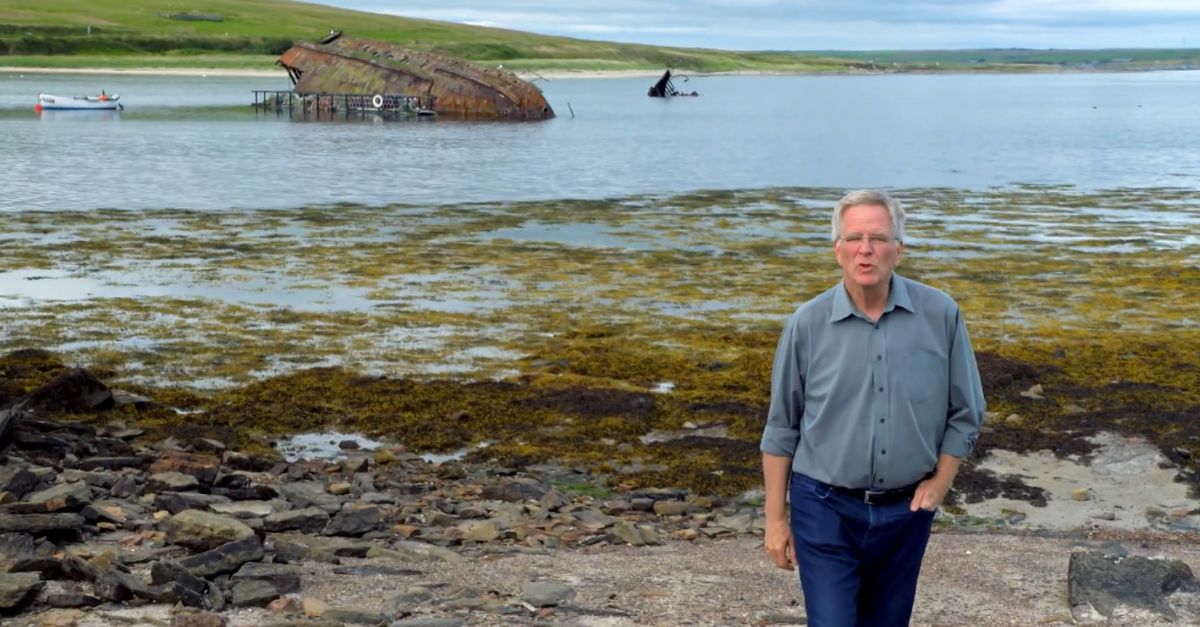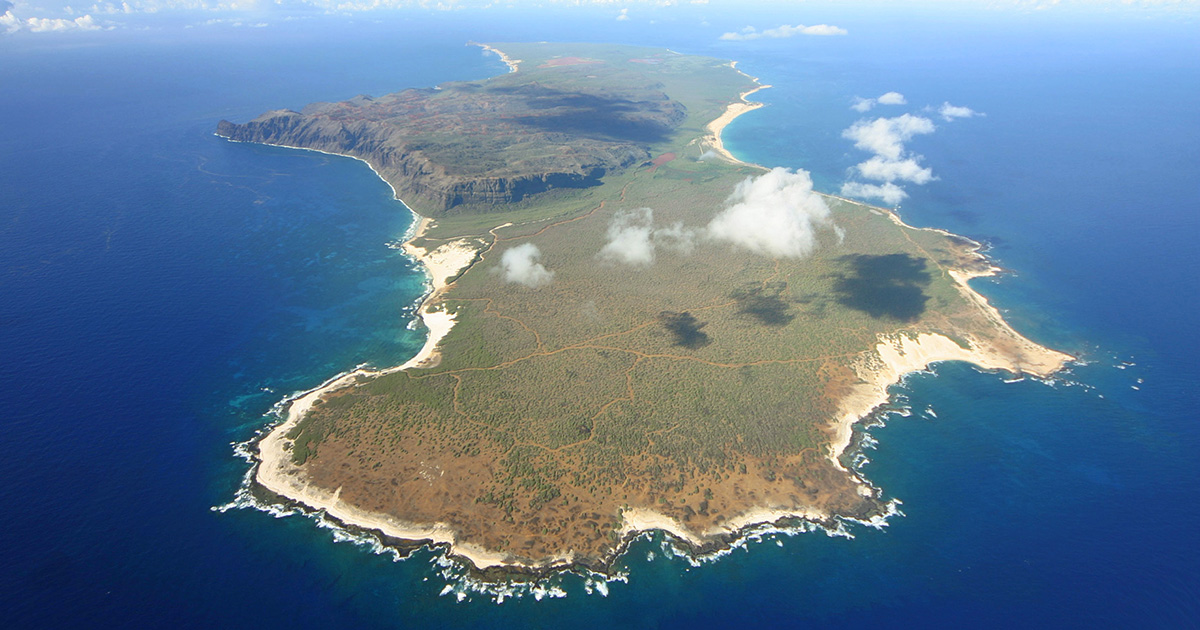Out Of Sight, Out Of…
Nobody sets out to abandon a ship. But it happens. Some rust near cities, others sink quietly in lagoons. Most got left out of the story—unless you stumble on them or go digging (or swimming).

Nouadhibou, Mauritania
No signs warn you as you approach the bay, but what lies ahead is staggering. Nouadhibou is home to the world's largest ship graveyard, with over 300 vessels rusting in shallow waters. Because Mauritania lacked regulations in the 1980s, shipowners quietly dumped their aging fleets and walked away.
 Sebastián Losada, Wikimedia Commons
Sebastián Losada, Wikimedia Commons
Truk Lagoon, Micronesia
It took two days in 1944 for American bombers to sink Japan's prized Pacific fleet. More than 40 warships and hundreds of planes were lost in Truk Lagoon. Their remains still sit intact on the ocean floor, where divers and historians study them as a sunken WWII museum.
 Truk Lagoon Micronesia. Scuba diving the shipwreck capital of the world, January 2024. by Gary Tyson
Truk Lagoon Micronesia. Scuba diving the shipwreck capital of the world, January 2024. by Gary Tyson
Scapa Flow, Scotland
In 1919, Germany’s interned High Seas Fleet was scuttled in Scapa Flow to prevent Allied seizure. Over 50 warships sank, and though many were salvaged, several survive down there. These wrecks lie deep in cold water, corroding beneath the North Sea’s quiet surface.
 John Haslam, Wikimedia Commons
John Haslam, Wikimedia Commons
Arthur Kill, Staten Island, New York, USA
Arthur Kill is home to over 100 rusting boats, including tugboats and WWII-era freighters. They were laid up in the mid-1900s as America's maritime industry declined, and today they sit fenced off and ignored. Just across from one of the busiest cities in the world lies this forgotten scrapyard.
 joiseyshowaa, Wikimedia Commons
joiseyshowaa, Wikimedia Commons
Bikini Atoll, Marshall Islands
Between 1946 and 1958, the US tested nuclear weapons at Bikini Atoll, where warships from the US and Germany were deliberately sunk as targets. Some hold on eerily intact beneath the surface, and although divers still visit, traces of radiation continue to linger in the surrounding coral reefs.
Camaret-Sur-Mer, France
After WWII, steel-hulled vessels were abandoned here, left to sink into the soft mud. Some even became muses for painters by capturing the beauty in decay. While no signs mark the graveyard, locals are familiar with it, and preservationists fear that the wrecks may vanish before they can be saved.
 Marc Lacoste, Wikimedia Commons
Marc Lacoste, Wikimedia Commons
Aral Sea, Uzbekistan
What once was a bustling fishing port is now a wasteland of steel. Soviet irrigation projects drained the rivers feeding the Aral, and Moynaq—once a coastal town—now sits over 90 miles from water. The abandoned fleet lies marooned, a monument to environmental failure.
Loch Striven, Scotland
During WWII, Loch Striven hosted tests for the famous “bouncing bomb,” and ships were anchored as targets. While most were scrapped, underwater surveys have revealed bomb casings and chains, though few strong traces of the vessels sit half-submerged.
 Russel Wills , Wikimedia Commons
Russel Wills , Wikimedia Commons
Saranda Bay, Albania
German and Italian ships were scuttled in Saranda Bay as the WWII retreats unfolded. A few hulls still sit in the shallows today—unprotected and fading with time. Locals later salvaged parts for scrap during communist rule, which left only traces of the war-torn fleet behind.
 Albania Saranda history shipwreck very near to Saranda shore. by Teemu Salonen
Albania Saranda history shipwreck very near to Saranda shore. by Teemu Salonen
Noumea, New Caledonia
In Noumea, US forces once positioned ships to support their Pacific push during WWII. Today, only a few rusting hulks sit quietly in the harbor’s depths. When peace returned, many vessels were left behind and forgotten. Locals later scavenged them for steel and copper.
Plymouth Sound, England
The sea here holds centuries of wreckage. Plymouth Sound saw losses from the Spanish Armada and naval mishaps. Archaeologists have identified wrecks from multiple eras, though many stand unrecorded. Beneath busy shipping lanes, a layered graveyard lies hidden from most passing vessels.
Tivat, Montenegro
Tivat was once a Yugoslav naval port, and after the country dissolved, Soviet-built patrol boats were left behind. The rusting hulls now sit in the Bay of Kotor near luxury marinas. They once flew flags no longer recognized, and the site may become a maritime museum.
 Finis Coronat Opus, Wikimedia Commons
Finis Coronat Opus, Wikimedia Commons
Cape Agulhas, South Africa
Did you know the Atlantic and Indian Oceans collide near Cape Agulhas, which creates chaotic currents that have confused sailors for centuries? Since the 1600s, more than 150 ships have been lost at sea. One, the Meisho Maru No 38, still leans onshore, while others are lost beneath the waves.
Kiptopeke, Virginia, USA
Nine concrete ships now shield the shoreline, which forms a breakwater that was arranged in 1948 by the Virginia Ferry Corporation. These WWII-era vessels were intentionally sunk, and their intact hulls continue to attract nesting birds and curious paddlers exploring the nearby shallow waters.
Tromso, Norway
Nazi forces scuttled warships in these icy fjords as they retreated, and some were later recovered through salvage efforts, while others still rest on the seafloor. Although environmental concerns persist, most documented efforts in Tromso’s waters focus on unexploded ordnance and heritage preservation rather than active leak monitoring.
 The Municipality of Tromsø from Tromsø, Norway, Wikimedia Commons
The Municipality of Tromsø from Tromsø, Norway, Wikimedia Commons
Port Royal, Jamaica
Once branded "the wickedest city on Earth," Port Royal partly sank into the sea after a 1692 earthquake. Ships in the harbor went down with it. Archaeologists have confirmed that many sit buried in layers of mud, and UNESCO has supported preservation efforts still underway today.
 Diego Tirira from Quito, Ecuador, Wikimedia Commons
Diego Tirira from Quito, Ecuador, Wikimedia Commons
Basra, Iraq
The Iran-Iraq war struck the Shatt al-Arab near Basra with intense combat, and naval as well as commercial vessels sank or took damage. Operations like Karbala-5 worsened the losses. While unrest delays salvage work, the waterway still conceals wrecks scattered across years of regional conflict.
Kure, Japan
Following Japan’s surrender in August 1945, Kure’s harbor and nearby waters experienced extensive naval losses, as Allied air raids in July had already sunk or disabled dozens of ships, including battleships and cruisers. Some vessels were later scuttled, and a few remnants are detectable through modern sonar surveys.
 Evelyn-rose, Wikimedia Commons
Evelyn-rose, Wikimedia Commons
Mumbai Harbour, India
Though mostly known for modern maritime traffic, Mumbai’s coast holds hidden shipwrecks. The 2011 grounding of the MV Wisdom and the 2024 Neel Kamal ferry incident reflect a longer legacy. Older derelicts near Elephanta Island are unrecorded, their existence hinted at but never fully confirmed.
 Vyacheslav Argenberg, Wikimedia Commons
Vyacheslav Argenberg, Wikimedia Commons
Kaohsiung, Taiwan
Kaohsiung's shipyards once thrived, but economic shifts in the 1990s left vessels idle. Port records confirm that decommissioned freighters and tankers were left in older docking areas. In forgotten basins, saltwater and time quietly ate through the hulls of these steel giants left behind.
 CEphoto, Uwe Aranas, Wikimedia Commons
CEphoto, Uwe Aranas, Wikimedia Commons
Baltimore Harbor, Maryland, USA
Low tide reveals what is left behind. The Curtis Bay Ghost Fleet comprises Liberty ships and tugs retired after WWII. Once managed by the US Maritime Administration, these vessels were stripped for parts but never removed. Their skeletal decks and sterns still breach the surface during tidal retreat.
 Oldlinestate, Wikimedia Commons
Oldlinestate, Wikimedia Commons
Grytviken, South Georgia
At the edge of the Antarctic, whaling ships now lie still. Grytviken was a central whaling station in the early 1900s. The cold, dry air preserved many of the vessels beached near the processing buildings. Today, the site is protected under South Georgia's museum and heritage regulations.
 Lieutenant Philip Hall, NOAA Corps, Wikimedia Commons
Lieutenant Philip Hall, NOAA Corps, Wikimedia Commons
Lofoten Islands, Norway
Lofoten’s maritime history includes wooden and motorized fishing boats that have been operating since the early 20th century. The region is home to documented wrecks, mostly wooden vessels or ships from the post-WWII period. These remnants reflect the area’s long reliance on coastal fishing and seasonal maritime activity.
 Sonia Marotta, Wikimedia Commons
Sonia Marotta, Wikimedia Commons
Kish Island, Iran
The Greek Ship, a rusted cargo vessel, ran aground off Kish Island in 1966. Once popular with tourists, it now decays without formal protection. Its origin is unclear, and the wreck sits offshore, quietly slipping from public memory and absent from any preservation effort.
Valparaiso, Chile
Not everything sunk was lost at sea. In the 1800s, Valparaiso's coastal waters became a final resting place for damaged ships, some of which were scuttled deliberately. Later, Chile's navy used the bay during armed blockades. Low-oxygen waters preserved wooden hulls, though few wrecks are publicly documented or accessible.
 Luigi bosca, Wikimedia Commons
Luigi bosca, Wikimedia Commons
Magadan, Russia
Oil barges from the 1950s sit abandoned along Magadan's frozen inlets, remnants of its Soviet-era role as a shipping hub for labor camps. Few divers explore the site. Documentation is scarce, and rumors of radioactive cargo continue to cloud what may still rest beneath the surface.
 Andrey dementev, Wikimedia Commons
Andrey dementev, Wikimedia Commons
Manila Bay, Philippines
The wrecks are wartime ghosts. During the 1945 Battle of Manila, dozens of American and Japanese ships sank. Some were deliberately sunk to block the enemy's advance. Many still lie untouched, unmarked by plaques, their steel skeletons slowly fading under sediment and shifting tides.
 Vyacheslav Argenberg, Wikimedia Commons
Vyacheslav Argenberg, Wikimedia Commons
Halifax Harbour, Canada
In 1917, a munitions ship detonated in Halifax Harbour, instantly obliterating more than a dozen anchored ships. Fragments of vessels, like the SS Mont-Blanc, have been found underwater. The rest sank without a trace and now lie buried beneath modern streets, paved over long before recovery was possible.
Lampedusa, Italy
Abandoned migrant boats line Lampedusa’s coast. Since the early 2000s, hundreds have been left behind by rescue operations. Though not traditional wrecks, many are half-sunken and rotting. They silently document a modern crisis, ignored as debris but deeply tied to human movement and forgotten urgency.
 Annamariacapicchioni, Wikimedia Commons
Annamariacapicchioni, Wikimedia Commons
Skeleton Coast, Namibia
The Skeleton Coast stretches along Namibia’s Atlantic edge, where desert winds meet icy surf. More than 1,000 ships—like the “Eduard Bohlen” and “Dunedin Star”—were lost here to fog and shifting sand. Once feared by sailors, this coastline is now protected as a national park.
Teriberka, Russia
On Russia’s Arctic coast, Teriberka hosts rusting Soviet-era trawlers slowly dissolving in the sea. Once a fishing hub, it now draws tourists who chase the Northern Lights or visit the filming site of Leviathan. Its decaying fleet stands as a stark symbol of post-Soviet decline and abandonment.
Invergordon, Scotland
Naval history once defined this port. In 1915, the HMS Natal exploded nearby, and the 1931 sailor mutiny shook the Royal Navy. While most ships have vanished, pieces may still lie in the Cromarty Firth. Cruise liners now dock where mutineers once stood—without signs to mark the unrest.
Freetown Harbour, Sierra Leone
During WWII, Freetown became a key support hub for Atlantic patrols and hosted depot ships, such as “HMS Philoctetes”. While wartime wrecks are likely, especially trawlers and smaller launches, confirmed documentation remains sparse. The harbor's wartime role is underrecognized despite its strategic importance to Allied convoys.
 Ghassan Mroue, Wikimedia Commons
Ghassan Mroue, Wikimedia Commons
Port Stanley, Falkland Islands
After battling the brutal passage of Cape Horn, dozens of crippled vessels limped into Stanley’s harbor. Some, like the “Lady Elizabeth,” beached in 1936, were repurposed as storage hulks or deliberately sunk. Even today, locals refer to it as the graveyard of the sailing age.
 Jhelum Shipwreck by marksman1875
Jhelum Shipwreck by marksman1875
Abadan, Iran
Once a refinery hub, Abadan bears the scars of conflict. It served Allied logistics in WWII, then suffered heavy bombardment during the Iran-Iraq War. Oil tankers and battleships now lie rusting along the Shatt al-Arab. These wrecks mark decades of geopolitical turmoil and shattered maritime ambition.
 Iranian Department of Publication and Broadcasting Volume I No.6, Wikimedia Commons
Iranian Department of Publication and Broadcasting Volume I No.6, Wikimedia Commons
Astoria, Oregon, USA
Astoria's maritime history is marked by significant wrecks and salvage work, including the “Peter Iredale” (1906), which is visible on the beach. The “SS Yorkmar” was salvaged nearby in 1952. While Astoria contributed regionally, postwar Liberty ship disposal was primarily handled in Portland’s larger shipyard facilities.
 Robert Bradshaw (user Robertwb), Wikimedia Commons
Robert Bradshaw (user Robertwb), Wikimedia Commons
Piraeus, Greece
Piraeus still operates as one of the Mediterranean’s oldest ports, but its roots run deep into ancient warfare. During the Battle of Salamis, 372 ships launched triremes into action. Its fortified harbors—Zea and Munichia—once held naval supremacy, and underwater ruins still mark that legacy.
 Sekundenschlaf~commonswiki, Wikimedia Commons
Sekundenschlaf~commonswiki, Wikimedia Commons
Odessos (Varna), Bulgaria
In Bulgaria’s Black Sea waters, explorers discovered a remarkably preserved Greek shipwreck near Odessos, dated to over 2,400 years old. Found at a depth of 2,000 meters, the wreck remained intact thanks to oxygen-free waters. It's one of 60+ ancient vessels now known in this deep-sea "graveyard".
 M/V Seabright at Odessos Shipyard by ODESSOS Shiprepair Yard S.A. - Varna, Bulgaria
M/V Seabright at Odessos Shipyard by ODESSOS Shiprepair Yard S.A. - Varna, Bulgaria
Lagos Harbour, Nigeria
Rusting wrecks scatter Lagos Harbour, where many were once used for oil smuggling or makeshift storage, and some now conceal illicit operations. These derelict vessels contribute to both coastal erosion and severe pollution, yet despite government-led cleanup efforts, the harbor is visibly choked with maritime debris.
 Abandoned ships a rusting hazard in Nigeria waters by AP Archive
Abandoned ships a rusting hazard in Nigeria waters by AP Archive
Mallows Bay, Maryland, USA
Scuttled and burned after WWI, over 100 wooden steamships now rest in eerie silence beneath the waters of the Potomac. These wrecks serve as artificial reefs, which support aquatic wildlife. The entire sanctuary preserves a haunting piece of maritime history in Mallows Bay, Maryland.
Santo Domingo, Dominican Republic
The Ozama River is rich in layers of colonial maritime history. While hurricanes in 1545 and 1680 are documented in regional studies, specific records of entire fleets sinking in those areas are unclear. Some wrecks may lie beneath its murky waters, though formal documentation and exploration are still limited.
 Richard from USA, Wikimedia Commons
Richard from USA, Wikimedia Commons
Banjul, Gambia
Rusting vessels line the banks of Banjul, remnants of both colonial trade and the post-1970s economic downturn. While ferry and boat activity surged during Senegal’s civil unrest, links to abandoned ships are anecdotal. Today, these skeletal hulls serve as nesting grounds and informal docks, barely acknowledged by passing travelers.
Porto Velho, Brazil
Steam-powered vessels once powered the Madeira River’s booming trade. But by the 1920s, rubber busts and railway failures silenced the region. Along overgrown riverbanks near Santo Antonio, decomposing hulls still lie stranded in the mud—a relic of the forgotten era of Amazonian paddlewheel commerce.
 Silva Júnior - MTUR, Wikimedia Commons
Silva Júnior - MTUR, Wikimedia Commons
Khasab, Oman
A cargo ship lies beneath Qadah’s waters near the Musandam fjords. Although Khasab has a history of being a smuggling route, no confirmation exists to tie this wreck to that past. Coral now thrives here, and mainstream groups or solo tourists choose dolphin cruises and fjord tours over the site.






















